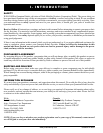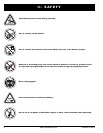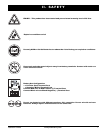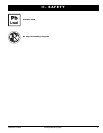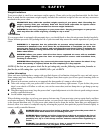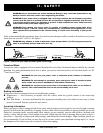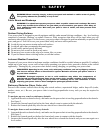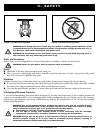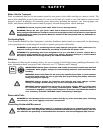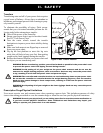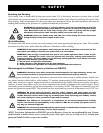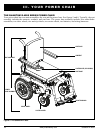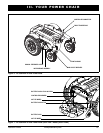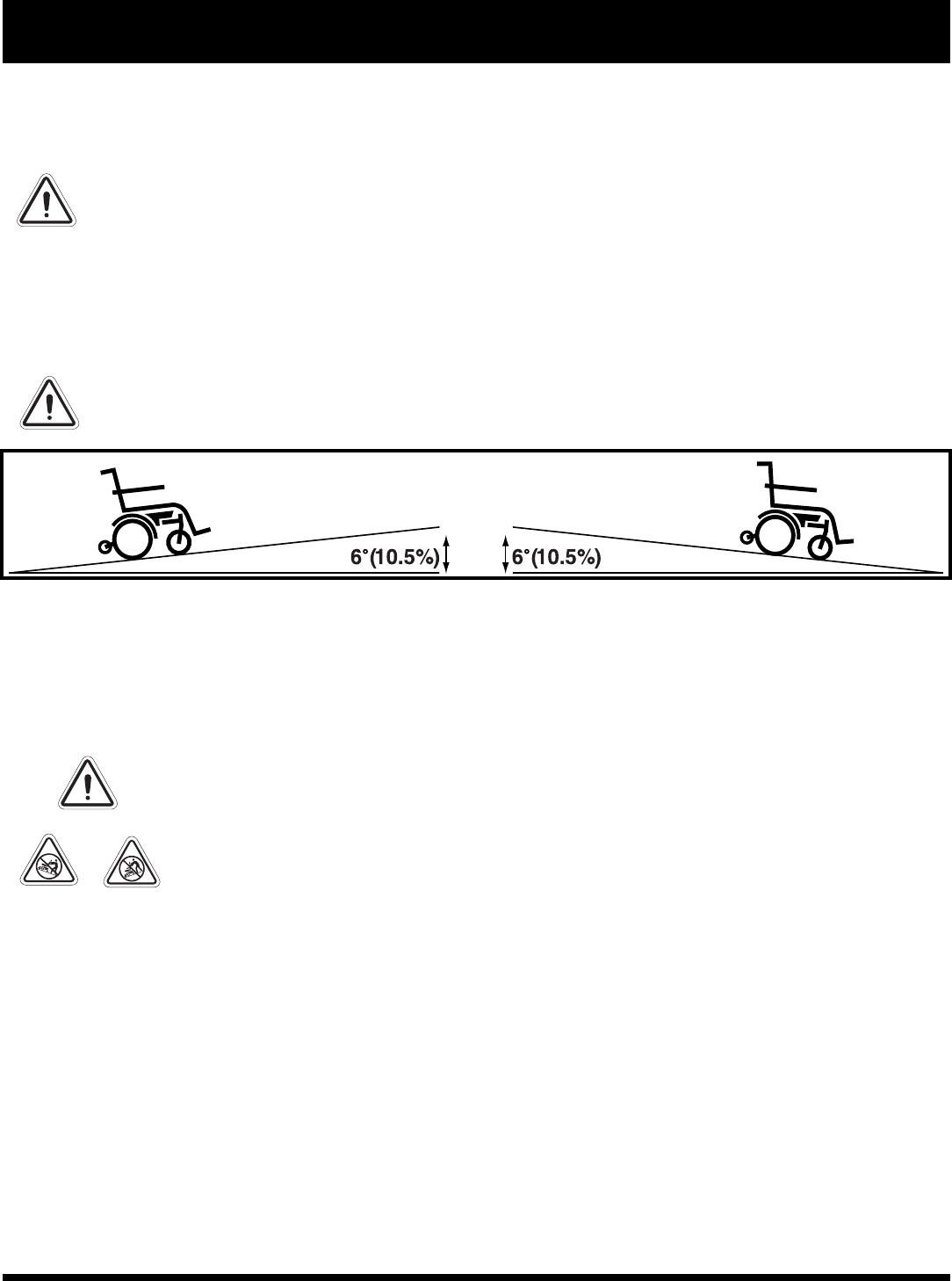
12 www.pridemobility.com Quantum R-4000
II. SAFETY
Figure 1. Maximum Safe Slope (Ascending and Descending)
WARNING! Never travel down an incline backward. Doing so may cause the powerchair to tip.
Always exercise extreme caution when negotiating an incline.
WARNING! If your power chair is equipped with a reclining seatback, do not attempt to negotiate
inclines with the seat in a reclined position. Do not attempt to negotiate obstacles with the seat
in a reclined position unless an attendant is present to help stabilize the chair. Failure to heed
could result in the power chair tipping over.
WARNING! Even though your power chair is capable of climbing slopes greater than those
illustrated in figure 1, do not, under any circumstances, exceed the incline guidelines or any
other specifications presented in this manual. Doing so could cause instability in your power
chair.
Pride recommends that the maximum slope of an incline you attempt to safely ascend or descend on your power
chair does not exceed 6° (10.5%). See figure 1.
WARNING! Any attempt to climb or descend a slope steeper than 6° (10.5%) may put your power
chair in an unstable position and cause it to tip.
Freewheel Mode
Your power chair is equipped with two manual freewheel levers to allow for manual maneuverability by a trained
attendant. For more information about how to place your power chair into and out of freewheel mode, see III.
“Your Power Chair.”
WARNING! Do not use your power chair in freewheel mode without an attendant
present.
WARNING! Do not attempt to personally place your power chair in freewheel mode
while seated on it. Ask an attendant for assistance if necessary.
WARNING! Do not place your power chair in freewheel mode while on an incline or
decline. This could cause the chair to roll uncontrollably on its own.
Braking Information
Your power chair is equipped with two powerful brake systems:
Regenerative — uses electricity to rapidly slow the vehicle when the joystick returns to the center/stop
position.
Disc Park Brake — activates mechanically after regenerative braking slows the vehicle to near stop, or when
power is removed from the system for any reason.
Cornering Information
While your power chair is equipped with front caster wheels and rear anti-tip wheels, excessively high cornering
speeds can still create the possibility of tipping. Factors which affect the possibility of tipping include, but are not
limited to: cornering speed, steering angle (how sharply you are turning), uneven road surfaces, inclined road
surfaces, riding from an area of low traction to an area of high traction (such as passing from a grassy area to a
paved area – especially at high speed while turning), and abrupt directional changes. High cornering speeds are
not recommended. If you feel that you may tip over in a corner, reduce your speed and steering angle (i.e., lessen
the sharpness of the turn) to prevent your power chair from tipping.



